Print the recipe card! homemade asian noodles
I’ve been bugged for how expensive Asian noodles are to buy at the grocery store and making them with my pasta maker is too much effort for a stir-fry dinner {which we like to have pretty often, helping to use up those carrots, celery and onions and whatever else is left in the fridge}. So I was excited to find this much simpler “skillet-based” Asian noodle recipe, which turns out to be a lot like making crepes.
I tried it here as a full-on food storage meal out of curiosity to see if stir-fry was even a palatable possibility minus the fresh vegetables. While the vegetables were missed, the flavor was still good and we liked the noodles. I won’t repeat the stir fry idea (it didn’t go over well), but the noodles themselves are keepers.
***
serves 6
Ingredients:
Stir- fry
(adapted from Grace Young’s “Cantonese-style Stir Fry”, half way down the linked page)
2 (12 oz.) cans Kirkland Roast Beef
2 (8 oz.) cans sliced water chestnuts
2 (4 oz.) cans mushrooms
7 1/2 tsp. cornstarch, divided
6 TBS soy sauce, divided
3 tsp. pineapple juice
1 tsp. garlic powder
1/4 tsp. red pepper flakes
7 TBS vegetable oil, divided
2 TBS oyster sauce, divided
3 3/4 tsp. sesame oil, divided
1/4 + 1/8 tsp freshly ground pepper
3/4 cup chicken broth (3/4 cup hot water + 3/4 tsp. chicken bouillon)
1/8 tsp ginger powder
1 cup freeze dried Mixed Bell Peppers (with 3/4 cup hot water to rehydrate)
***
Homemade Asian Noodles (recipe from America’s Test Kitchen)
1 cup cake flour
1/2 cup tapioca starch
1/2 cup cornstarch
1 tsp. salt
2 cups cold water
1 TBS peanut oil, plus 1/4 cup for brushing (*I substituted grapeseed oil due to our peanut allergy.)
1 tsp. sesame oil
***
Instructions:
Making the noodles
To make the noodles, begin by whisking together the cake flour, tapioca starch, cornstarch and salt. Slowly whisk in the water, peanut oil and sesame oil.
Brush a rimmed baking sheet generously with peanut oil. Lightly brush a 9.5 inch nonstick skillet with peanut oil and heat over medium-high heat until shimmering. Pour just under 1/2 cup batter into skillet and swirl to evenly coat the pan. Cover and cook until top is no longer sticky, 30 seconds. (I found it was easiest for me to count out the 30 seconds since the noodle sheets do burn quickly if left on too long.)
Using a rubber spatula if needed, transfer noodle sheet, cooked side down, to prepared baking sheet (noodles should slide easily out of the pan), and spritz with peanut oil to coat (*see note). Brush the pan with oil again before cooking. Repeat with remaining batter and oil, stirring batter well before making each noodle sheet. Let noodle sheets cool completely, then fold over into a semi circle (one by one) and cut into 1-inch strips. Use as desired in stir fry, dim sum or rolls. Noodle sheets may be covered with plastic wrap and stored at room temperature for up to one hour.
***
Use 3/4 cup hot water to rehydrate the mixed bell peppers.
In a small bowl combine 2 TBS cornstarch, 3/4 tsp. garlic powder, red pepper flakes and the ground pepper. In another small bowl combine 2 TBS soy sauce, 3 tsp. pineapple juice, 3 tsp. peanut oil, 3 tsp oyster sauce and 3/4 tsp sesame oil. In bit larger bowl, combine 3/4 cup chicken broth (started with 3/4 cup hot water, 3/4 tsp. chicken bouillon added), 4 TBS soy sauce and 3 tsp. oyster sauce. In another small bowl combine 1/4 cup chicken bouillon (started with 1/4 cup hot water, 1/4 tsp. chicken bouillon added), 3 tsp. sesame oil and 1 1/2 tsp. cornstarch.
Whisk together the dry ingredients with the first soy sauce/pineapple juice mixture. Add the drained beef and stir to coat.
Heat a 12 inch skillet over medium heat (*see note) until a bead of water vaporizes within 1-2 seconds of contact. Swirl in the remaining 2 TBS peanut oil, add the ginger and the remaining 1/4 tsp of garlic powder and stir until aromatic, 10 seconds. Carefully add the beef, spreading evenly in one layer. Cook undisturbed 30 seconds, allowing the beef to sear. Add the water chestnuts, mushrooms and peppers. Add the chicken broth/soy sauce mixture and stir to combine. Restir the cornstarch mixture and add to the skillet. Allow to heat a minute and turn off heat. Add noodles and serve immediately.
***
Making the noodles
Add the liquids to the dry ingredients…
to make a very wet batter.
Just as if you were making crepes, pour the batter onto the hot skillet and tilt the pan to coat the sides. Once the batter is distributed, cover the skillet and count out 30 seconds. These noodle sheets burn quickly, so keep them moving.
Slide onto the prepared baking tray.
The original recipe suggested brushing them with oil. I found that to be too time consuming (with the hot pan going at the same time) not to mention that the brush disturbed the noodle sheets too much, tearing some. Filling a spritz bottle to use worked much better. The reason you want to spritz with oil is that these noodles stick to everything. Once they’re cooled you want to be able to fold them to cut.
Remember to spritz the tops of the last noodle sheets too.
Once cooled, fold over into semi circles and cut into 1-inch strips.
You’ll end up with 8-9 noodle sheets worth of noodles.
***
To begin, drain the mushrooms, water chestnuts and roast beef. Rehydrate the peppers.
Measure out each of the stir-fry mixtures.
Whisk together the dry cornstarch mixture with the soy sauce/pineapple juice mixture. Add in the drained roast beef to coat.
Heat 2 TBS oil in a skillet over medium heat. Add 1/8 tsp. ginger powder and 1/4 tsp garlic powder and stir 10 seconds until aromatic.
Add the beef, spreading evenly and allow to cook undisturbed 30 seconds.
Add the water chestnuts, mushrooms and peppers.
Add the chicken broth/soy sauce mixture.
Finally, restir the cornstarch mixture and add, allowing to heat for a minute.
Gently add the noodles and serve immediately.
***
~~~~~~~~~~~~~~~~~~~~~~~~~~~
Notes:
- Just so you don’t get the wrong idea, these noodles aren’t hardy and stretchy like the Asian noodles you’de buy at the store. They’re more delicate (which seems to be the case with all homemade pasta), but then again, that’s what makes them good!
- When cooking with ingredients like these, the temperature needs to be lower than a usual stir-fry and it doesn’t need to cook hardly as long. It’s not going to be so much a “stir-fry” (like we’re used to thinking of one) as much as it’s a heated combination of ingredients. Call it an “un-stir-fry”?
- I’m thinking mung bean sprouts might be nice to try with this.

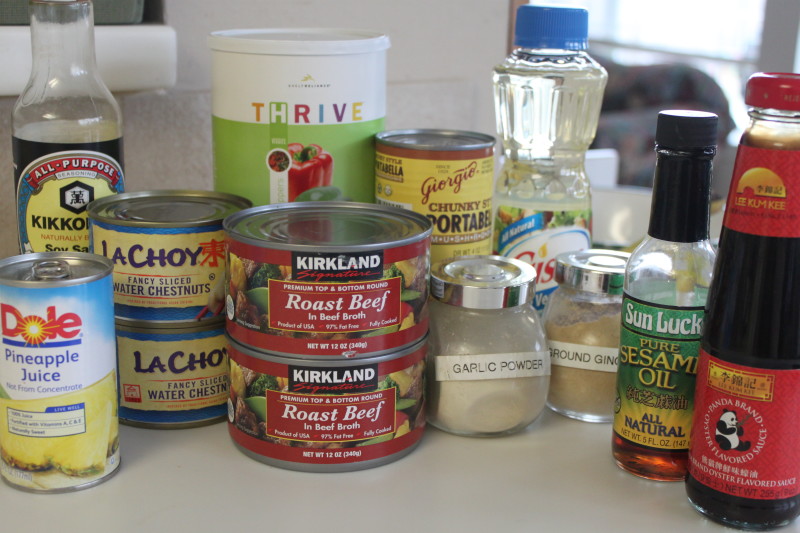
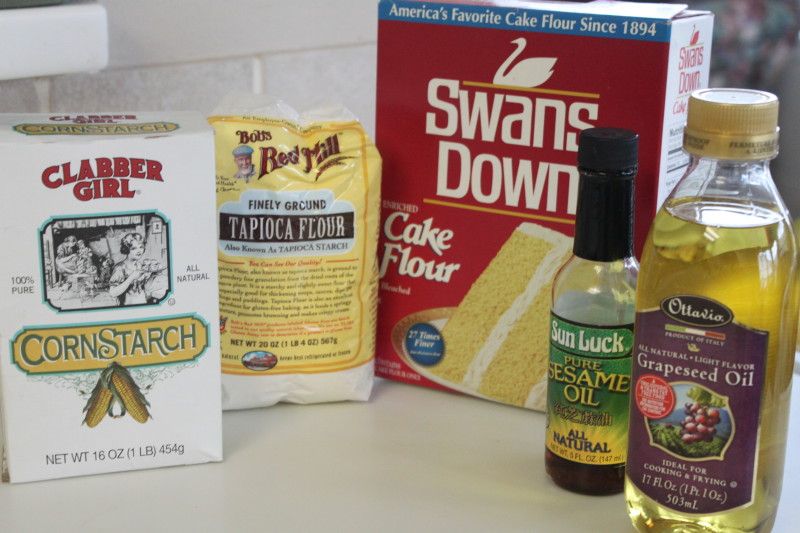
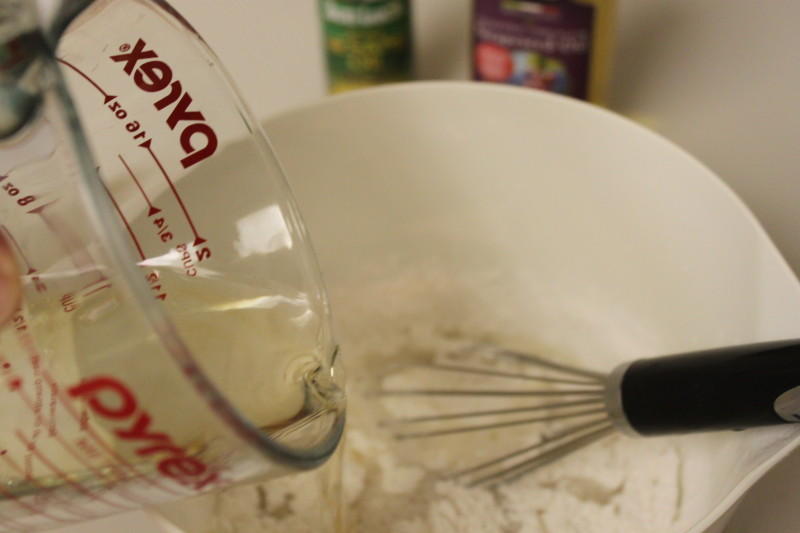
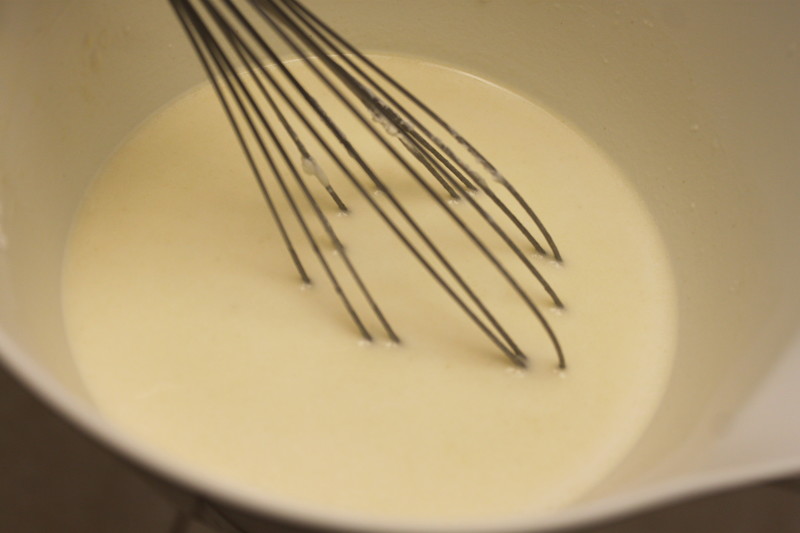
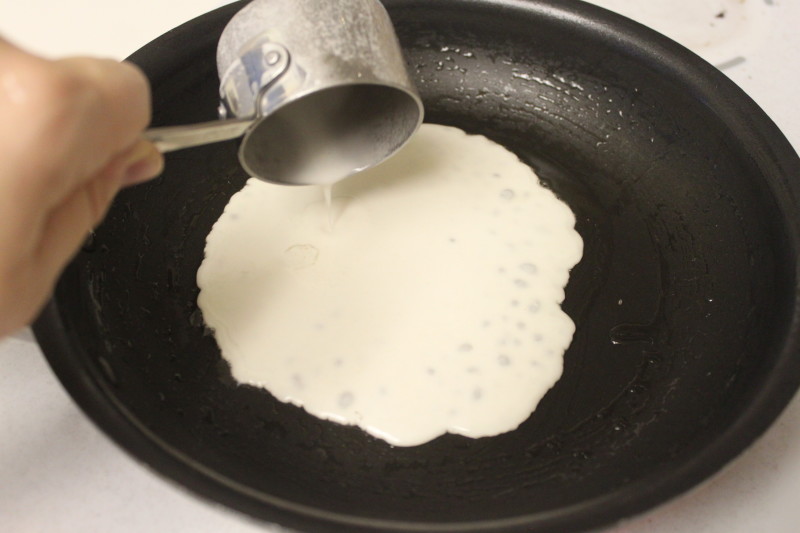
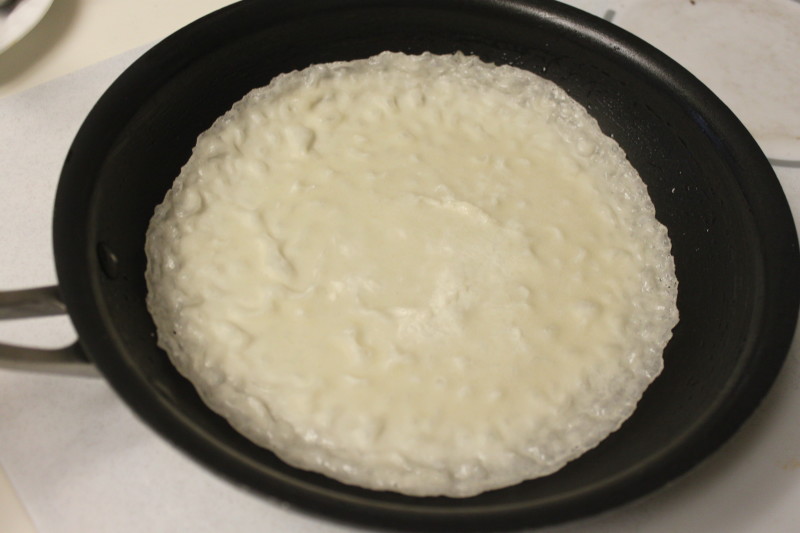

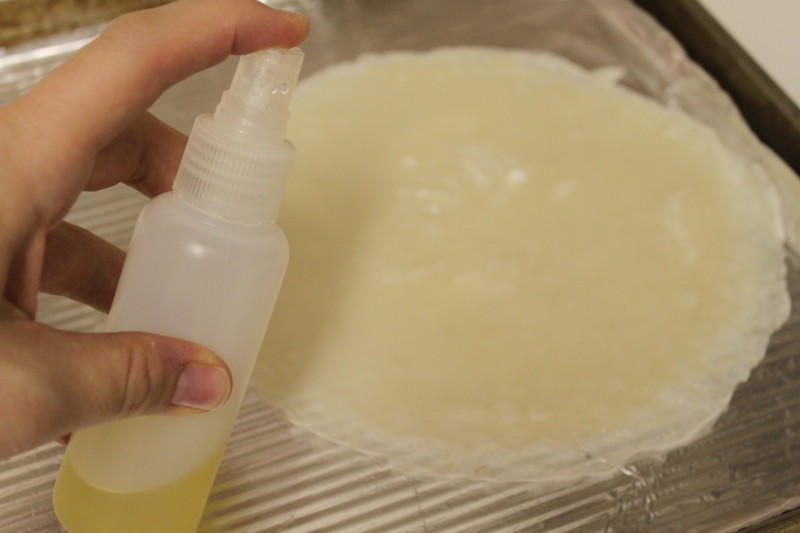
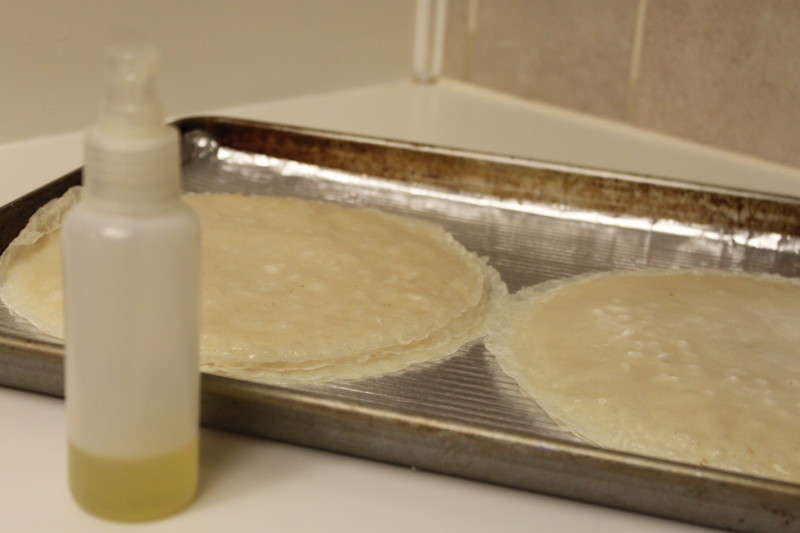
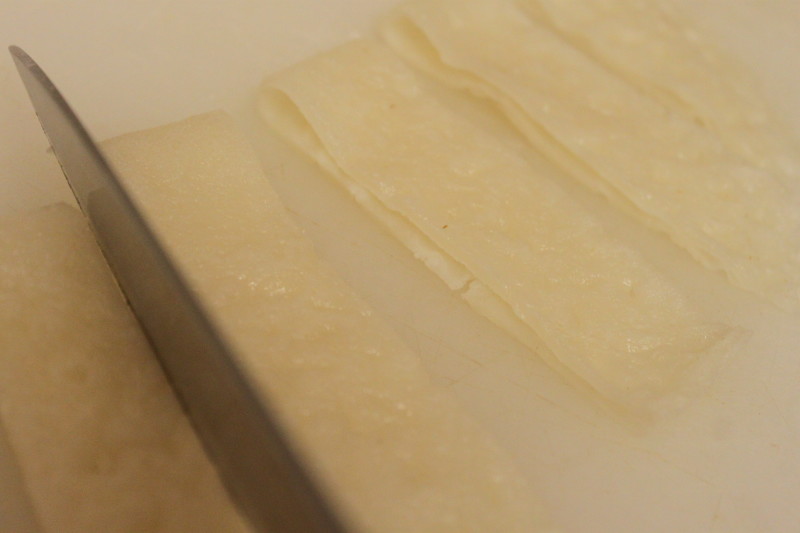
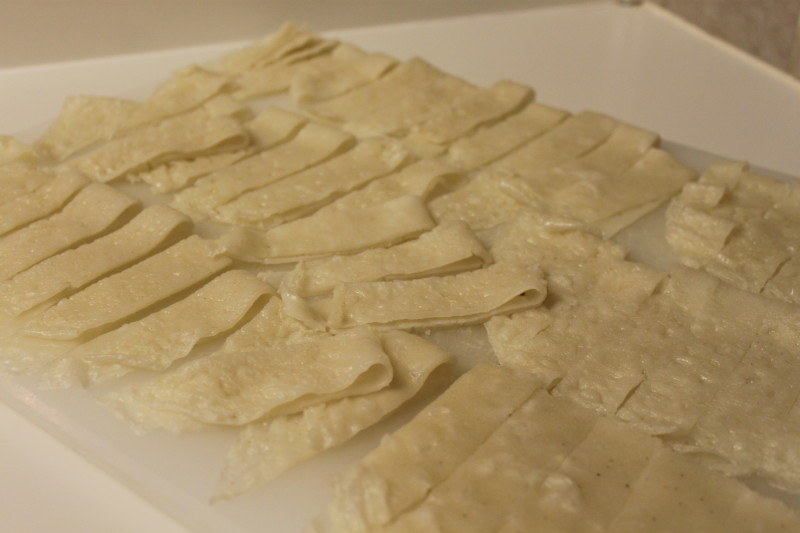
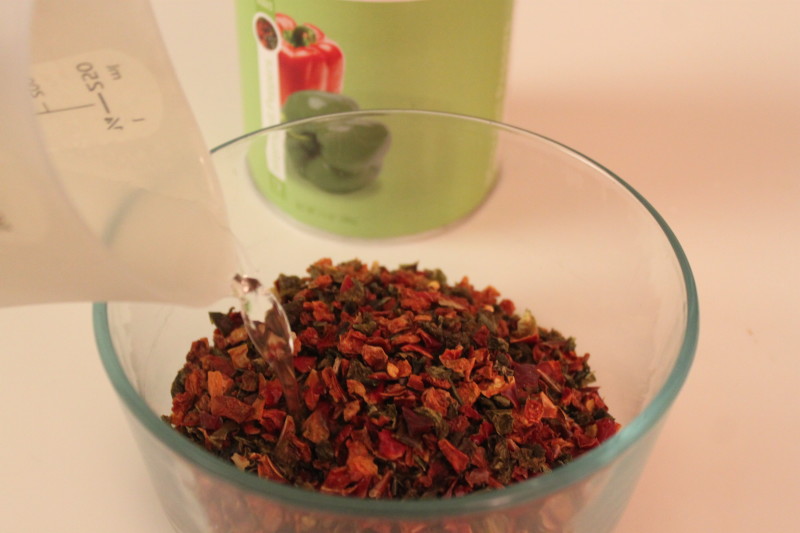
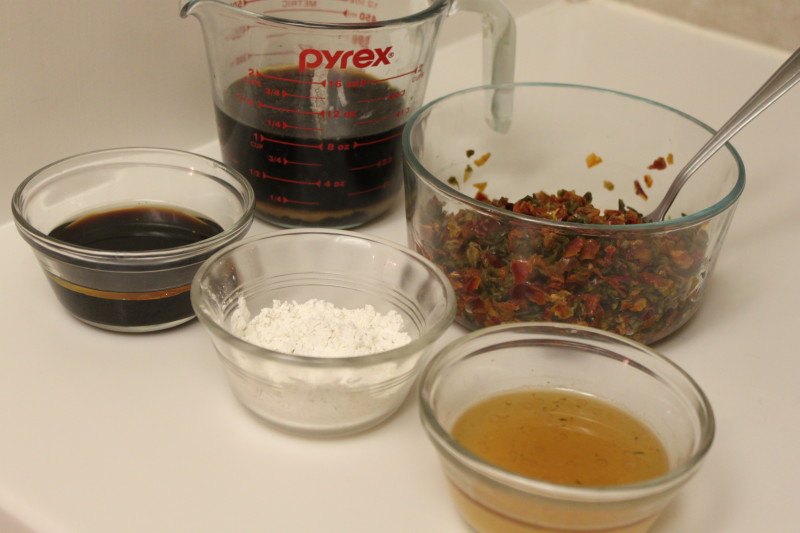
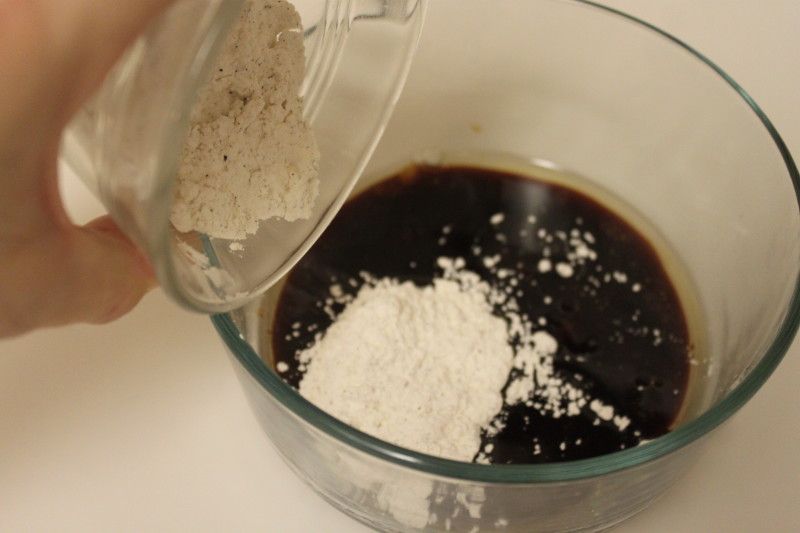
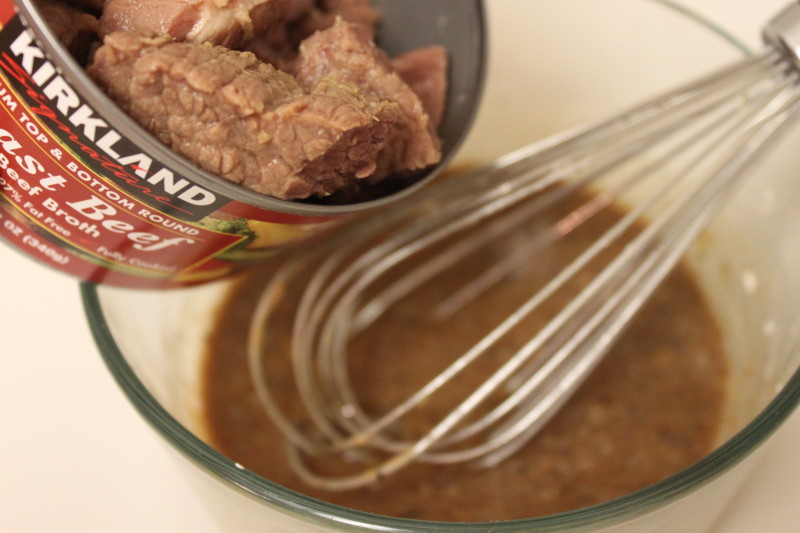
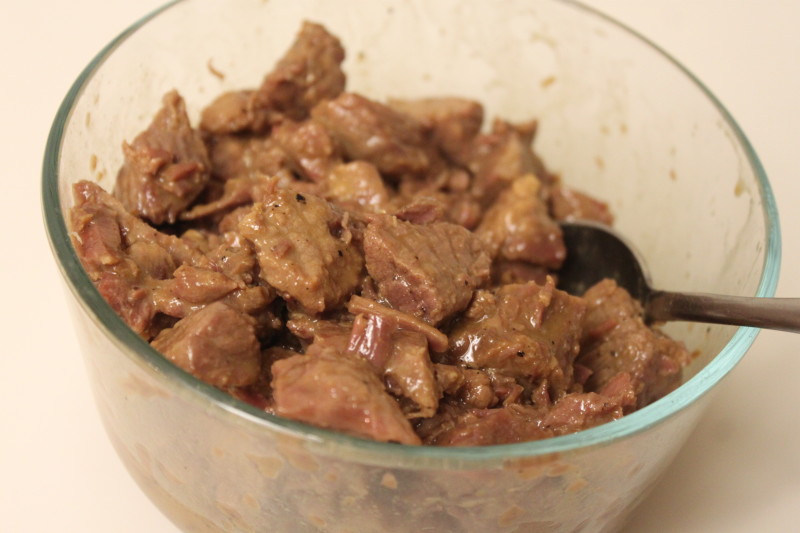
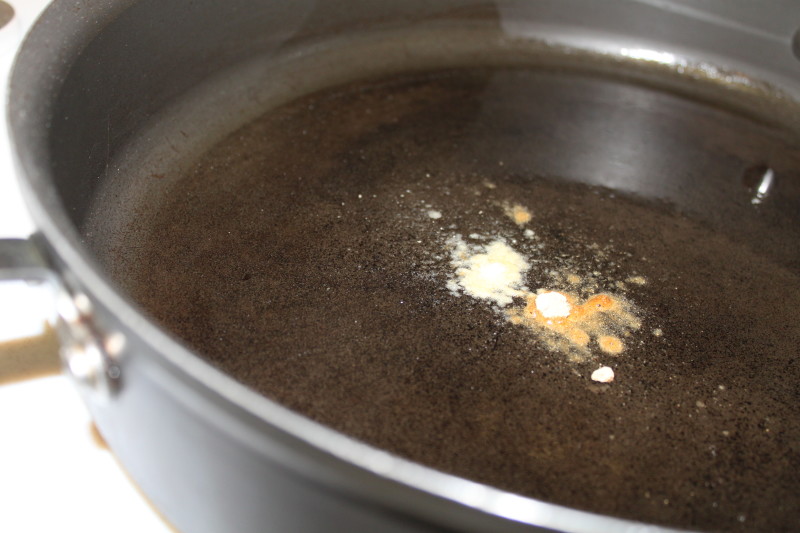
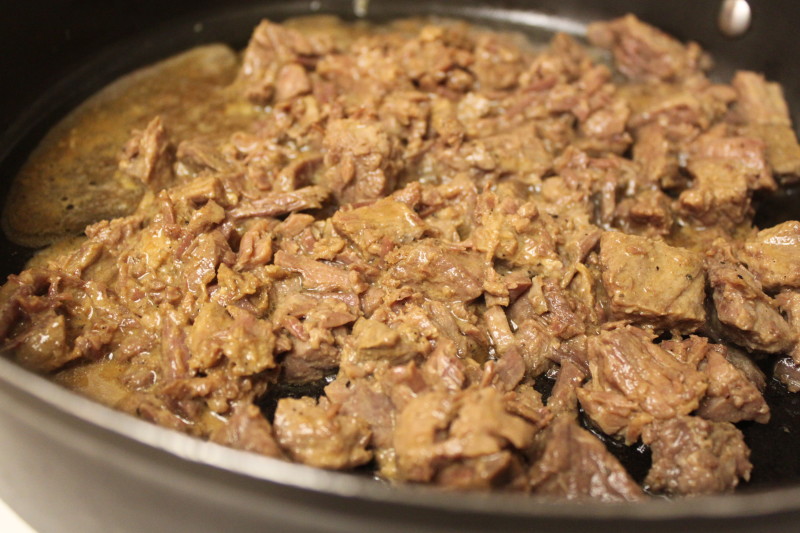
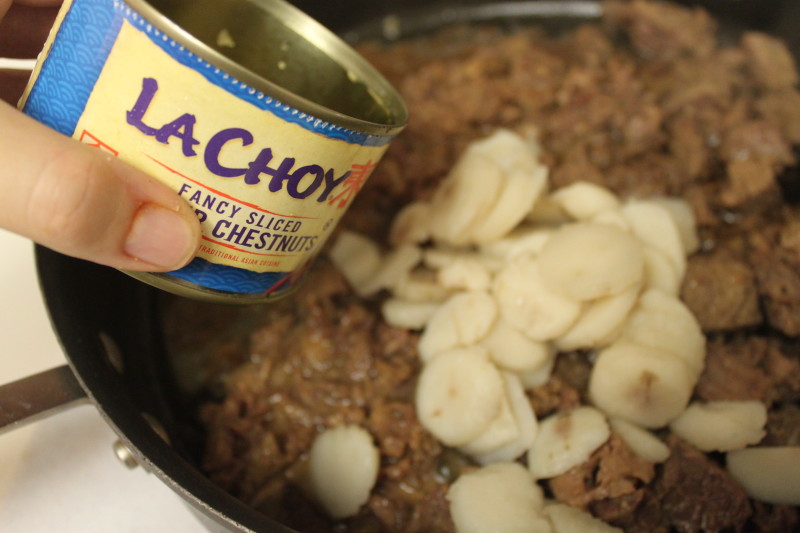
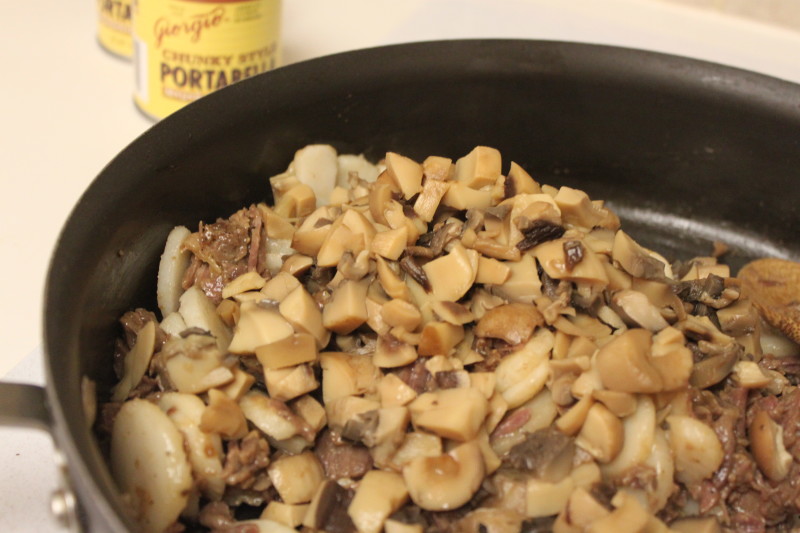
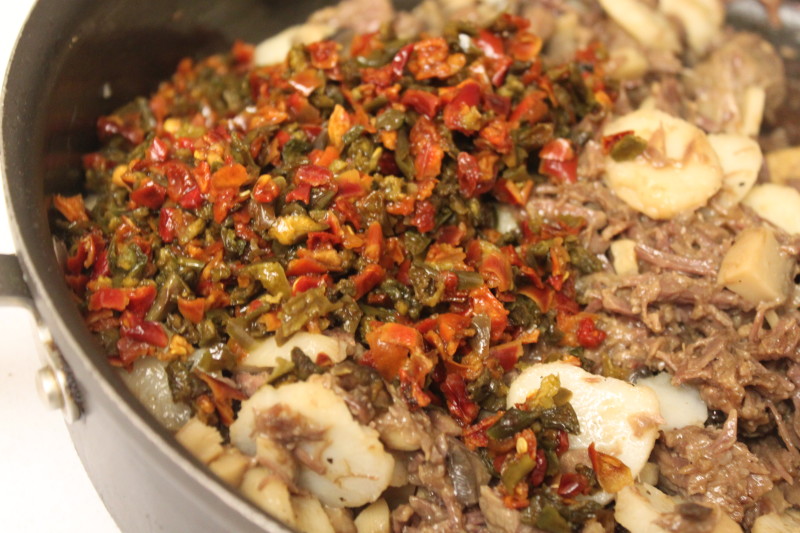
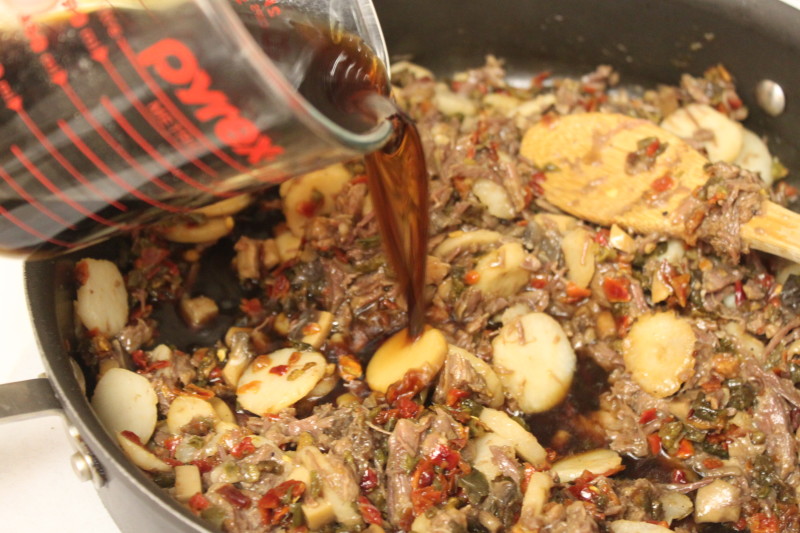
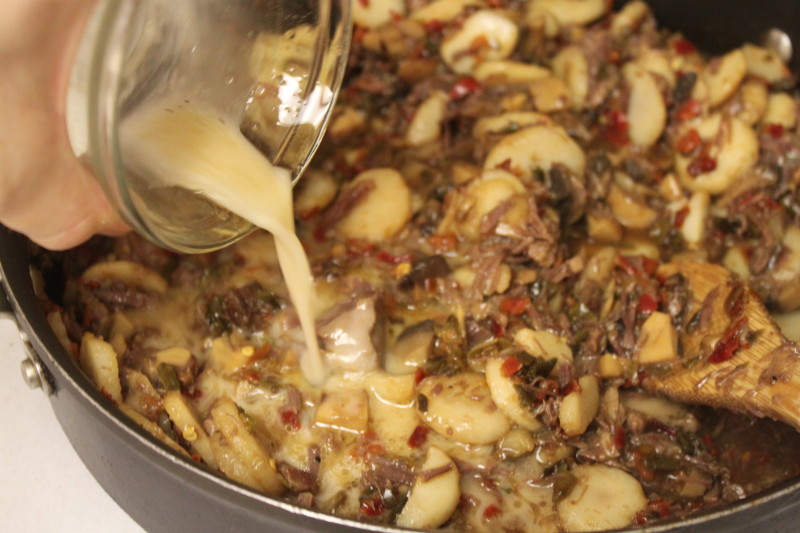

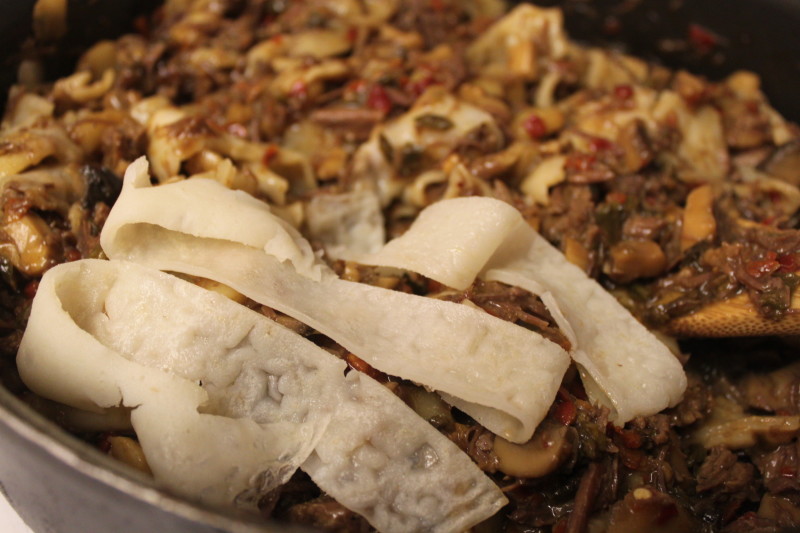
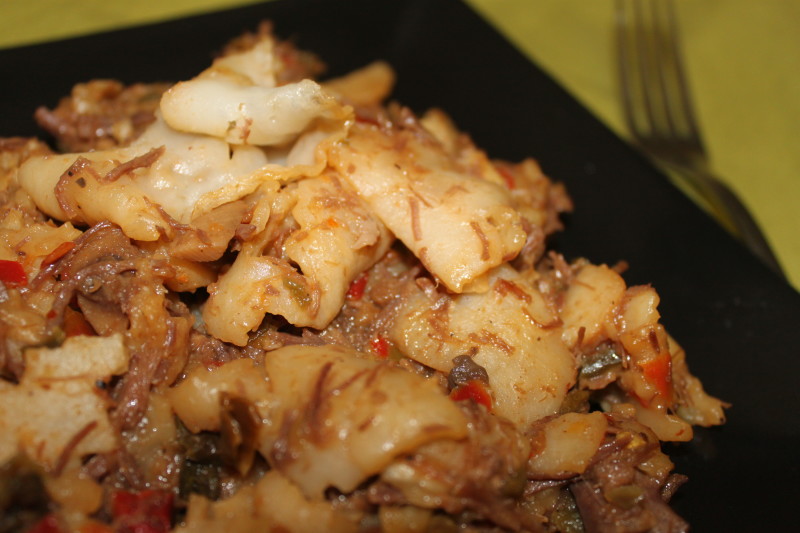

[…] Homemade Asian Noodles […]
The reason they aren’t stretchy is because stretchy asian noodles are actually pulled noodles made with lyewater, super complicated to make without lots of training but very tasty. These are good noodles too though.
Thank you Heather for explaining. I’ve heard of stretched Asian noodles but I didn’t realize that was the reason for the texture.